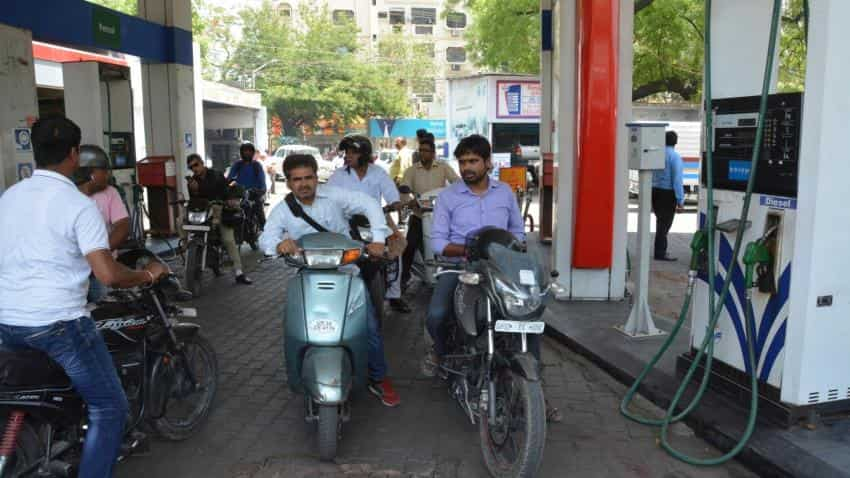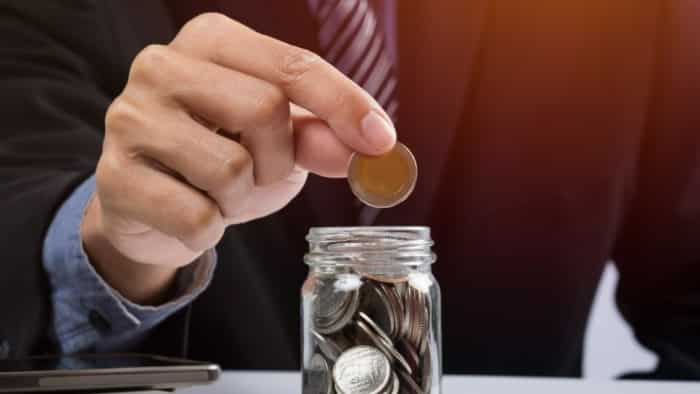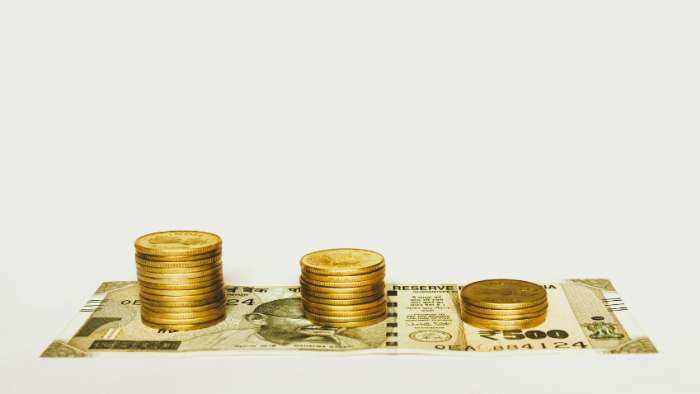Why govt is wrong that car, bike buyers are rich enough to afford high petrol, diesel prices
The Union Minister Alphons Kannanthanam commented on Saturday that those who can afford to buy a car or bike, can afford to pay for the high petrol and diesel prices too.

Key highlights:
- Petrol and diesel prices in India have reached at 3-year high on the back of higher taxes
- Alphons Kannanthanam said those who can afford to buy a car or bike can afford to buy petrol
- Two-wheelers currently outsell cars by more than 7 to 1
Petrol and diesel prices in the country have now record high levels despite crude oil prices falling. Both petrol and diesel prices in India have reached at 3-year high on the back of higher taxes being levied by the government. Even wholesale inflation in August rose to a 4-month high due to food and fuel prices.
But the government seems to be in no mood to reduce the prices on petrol or diesel by bring down the taxes, as Union Minister Alphons Kannanthanam on Saturday said those who can afford to buy a car or bike can afford to buy petrol.
“Who buys petrol? Somebody who has a car, bike; certainly he is not starving. Somebody who can afford to pay, has to pay,” said Kannanthanam, reported ANI.
This huge surge in the petrol and diesel prices began once the government on June 16 introduced its 'dynamic' pricing model which saw prices being revised on a daily basis instead of fortnightly earlier. Despite prices reaching to a three-year high Union Petroleum Minister Dharmendra Pradhan on Wednesday reiterated that the government does not plan to intervene to control prices.
Kannanthanam's response to the rising petrol and diesel prices seems to suggest that those buying a car or a bike are wealth enough to continue paying high prices for their fuel.
However, that cannot be any far from the reality as even poor farmers and those living in rural areas have to depend on their two-wheelers due to poor public transport infrastructure in India.
A reason why two-wheeler companies depend on good monsoon season in rural in India for high growth in sales. Another reason why two-wheeler sales in India is much higher than cars is due to the affordability for people in rural areas and towns.
The price of average price of a two-wheeler is just over Rs 50,000, while that of the cheapest car starts from over Rs 3 lakh.
A reason why two-wheelers currently outsell cars by more than 7 to 1. Which basically means that two-wheelers are the poor man's commute.
Two-wheeler sales in August stood at 18,91,062 units and had posted a 15% growth during the month, while passenger vehicle sales rose to 2,94,335 units with a robust 14% growth during the same month, according to data from the Society of Indian Automobile Manufacturers (SIAM).
Car sales have grown from 2,77,602 units in April to 2,94,335 units in August, just a 6% growth in sales. While two-wheeler sales have seen a larger 13% growth as sales rose from 16,74,796 units in April to 18,91,062 units in August.
Though two-wheeler and car sales have been growing in the last few months, this has mainly been due to sales at a wholesale level due to more acquisition from dealerships in anticipation of the upcoming festive season. On a retail level, sales of two-wheelers and cars seem to be struggling to get back on their feet.
This can be clearly seen as consumption of petrol and diesel in India has stagnated or declined a little from April to August period, despite the good growth in two-wheeler and car sales during the same period.
The consumption of petrol, for instance, has remained on the same level since April. In April the consumption of petrol stood at 2.08 million metric tonnes and in August barely grew to 2.1 million metric tonnes, according to data from the Petroleum Planning & Analysis Cell (PPAC) under the Petroleum Ministry.
Diesel consumption, on the other hand, has seen a decline from 6.9 million metric tonnes in April to 5.9 million metric tonnes in August.
While petrol consumption in May increased to 2.4 million metric tonnes from 2.08 million metric tonnes in April, in June consumption of petrol fell to 2.06 million metric tonnes when the government implemented the 'dynamic' pricing model.
In July and August consumption of petrol managed to increase a little, but it stayed stagnant at 2.1 million metric tonnes in both months.
Likewise, diesel consumption saw a huge drop May to June when the government implemented its scheme on fuel prices. In May diesel consumption increased to 7.5 million metric tonnes from 6.9 million metric tonnes in April, but slumped to 6.7 million metric tonnes in June.
Diesel consumption continued to see a decline, as it was 6.3 million metric tonnes in July and further dropped to 5.9 million metric tonnes in August.
Three months after the implementation of dynamic pricing on petrol and diesel, the prices in many cities in India have inched up to as close as Rs 80 to a litre.
Between June 16, 2017 – till September 14, Kolkata has seen the highest increase in petrol prices at Rs 9.8 per litre, followed by Chennai Rs 7.53 per litre, New Delhi has seen over Rs 7.33 per litre and Mumbai Rs 6.27 per litre.
Crude oil price from April has come down from $50.83 per barrel to $50.32 per barrel. In fact, in June it even declined to a low of $46.72 per barrel. But this has not brought down the prices of petrol and diesel in the country.
SC Tripathi, former petroleum secretary said, “It is true that as international crude prices go down, accordingly domestic petrol and diesel prices also change. If international crude has come down to $50 per barrel then petrol and diesel prices should have been between Rs 18 - Rs 20 per litre for preparing the product.”
Tripathi still feels such performance of global crude prices is just a gradual rise which barely effects domestic fuel prices. One key thing that hampers India' fuel is the amount of taxes being charged currently.
Petrol and diesel prices do not come under the umbrella of Goods and Services Tax – which proclaims the agenda of 'one tax one nation', and thus, as per Tripathi petrol is being taxed at 130% and diesel at nearly 90%.
In March 2014, excise duty, which stood at just Rs 9.48, per litre has now reached Rs 21.48 per litre in case of petrol. While Value Added Tax (VAT) which was levied at Rs 12.20 per litre on March 2014, is now being charged at Rs 14.96 per litre.
The reason why the government does not want to reduce these taxes on petrol and diesel, is the revenue they earn from it.
From VAT, government earned income of Rs 1,66,378 crore in last fiscal (FY17) compared to the income of Rs 1,29,045 crore in FY14. Income from excise duty touched a whopping Rs 2,42,961 crore in FY17 as against mere income of Rs 77,982 crore in FY14.
ALSO READ:
Get Latest Business News, Stock Market Updates and Videos; Check your tax outgo through Income Tax Calculator and save money through our Personal Finance coverage. Check Business Breaking News Live on Zee Business Twitter and Facebook. Subscribe on YouTube.
RECOMMENDED STORIES

Rs 4,000 Monthly SIP for 33 years vs Rs 40,000 Monthly SIP for 15 Years: Which can give you higher corpus in long term? See calculations

Latest FD Rates: Know what SBI, PNB, Canara Bank, HDFC Bank, ICICI Bank are providing on 1-year, 3-year and 5-year fixed deposits

Sukanya Samriddhi Yojana vs PPF: Rs 1 lakh/year investment for 15 years; which can create larger corpus on maturity?
04:21 PM IST








 Need tax uniformity on petroleum products, says Pradhan
Need tax uniformity on petroleum products, says Pradhan Petrol under GST unfeasible; excise duty can be cut, says Reddy
Petrol under GST unfeasible; excise duty can be cut, says Reddy Why is your petrol, diesel bill rising despite cheaper international crude?
Why is your petrol, diesel bill rising despite cheaper international crude?  Spike in petrol, diesel price fail to arrest car, two-wheeler sales
Spike in petrol, diesel price fail to arrest car, two-wheeler sales